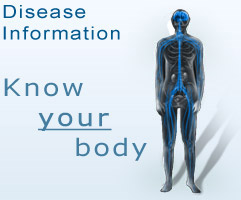Gastroenteritis
What is gastroenteritis?
People generally refer to gastroenteritis as ‘stomach flu', but gastroenteritis is not a type of flu at all, it is an inflammation of the lining of the intestines caused by a virus, bacteria (germs) or parasites.
Gastroenteritis is extremely contagious and causes millions of cases of diarrhoea each year. Anyone is susceptible to gastroenteritis and most people recover without any major complications. However, gastroenteritis can be serious when people can't drink enough fluids to replace what is lost through vomiting and diarrhoea - especially infants, young children, the elderly and people with weak immune systems. Dehydration is a big concern when dealing with gastroenteritis and every parent in South Africa should know how to effectively manage dehydration.
Symptoms of gastroenteritis
The main symptoms of gastroenteritis are:
- watery diarrhoea with or without vomiting;
- headache, fever, chills; and
- abdominal pain.
Symptoms usually appear within four to 48 hours after exposure to the virus and last up to two days, though symptoms can last as long as 10 days. In some cases, it can start within two hours after ingesting contaminated food or drink.
Dehydration is the loss of fluids from the body. Important salts or minerals, known as electrolytes are lost with the fluids. Dehydration can be caused by diarrhoea, vomiting, excessive urination, excessive sweating, or by not drinking enough fluids because of nausea and vomiting, difficulty swallowing, or loss of appetite. Drinking liquids can treat mild dehydration. Severe dehydration may require intravenous fluids and hospitalisation. Untreated severe dehydration can be life threatening, especially in children and is very dangerous in ill or malnourished children.
The symptoms of dehydration are:
- excessive thirst;
- dry skin;
- dry mouth;
- little or no urine or dark yellow urine;
- decreased tears;
- severe weakness or lethargy; and
- dizziness or light-headedness.
Causes of gastroenteritis
The viruses or bacteria (germs) that cause gastroenteritis damage the cells in the lining of the small intestine. As a result, fluids leak from the cells into the intestine and generate watery diarrhoea.
The rotavirus is the leading cause among children from between three and 15 months old and the most common cause of diarrhoea in children under the age of five. The rotavirus typically causes vomiting and watery diarrhoea for three to eight days, along with fever and abdominal pain. The rotavirus can also infect adults who are in close contact with infected children, but the symptoms in adults are milder.
The most common bacteria that cause gastroenteritis are E. Coli, shigella, salmonella and campylobacter. In AIDS patients, the bacterium that usually causes gastroenteritis is the clostridium difficile. These bacteria are often present in raw foods such as meats, chicken, diary products (including un-pasteurised milk) and eggs. Insects, rodents and other animals can also carry harmful bacteria. These bacteria may also be in creeks, rivers, lakes and dams. Staphylococcus and other germs can infect meat that was previously cooked and inadequately stored.
Spread of infection
Gastroenteritis is highly contagious. People with unwashed hands commonly transmit the virus or bacteria. People can contract the virus through close contact with infected individuals by sharing their food, drink, or eating utensils, or by eating food or drinking beverages that are contaminated with the virus or bacteria.
Even with good hygiene and sanitation, it is not easy to avoid the spread of infection. Generally by the age of five years, almost all children will have had one or more bouts of rotavirus gastroenteritis.
People who no longer have symptoms may also still be contagious. The virus can still be found in the patient's stool for up to two weeks after they recover from the condition. Also, people can become infected, without having symptoms, and spread the infection to others.
Where can I become infected?
Outbreaks of gastroenteritis can occur in households, childcare settings, schools, nursing homes, cruise ships, camps, dormitories, restaurants and any other places where people gather in groups.
Diagnosis of gastroenteritis
If you think you or a child has gastroenteritis, consult your doctor immediately. Doctors generally diagnose viral gastroenteritis based on the symptoms and a physical examination. Your doctor may ask for a stool sample to test for rotavirus or to rule out bacteria or parasites as the cause of your symptoms. No routine tests are currently available for the other types of viruses.
Treatment of gastroenteritis
Most cases of gastroenteritis in adults resolve over time without specific medicinal treatment. Antibiotics are only effective for bacterial infections and are useless against viral infections.
Children tend to become dehydrated more easily than adults. Diarrhoea and vomiting in young children is usually an indication that you must visit the doctor for treatment.
The primary goal of treatment is to reduce the symptoms and prompt treatment may be needed to prevent dehydration. Your body needs fluid to function.
Please note: infants, young children, the elderly and people with weak immune systems have a higher risk of developing dehydration due to vomiting and diarrhoea.
Relieving the symptoms of gastroenteritis
- Allow your gastrointestinal tract to settle by not eating for a few hours.
- Sip small amounts of liquids or suck on ice chips if vomiting is still a problem.
- Give infants and children oral re-hydration solutions to replace fluids and lost electrolytes (these can be bought from your pharmacist). Take small frequent sips. Note: clear soda or non-caffeinated sports drinks contain too much sugar and should not be used.
- Homemade re-hydration fluid can be used to support the child until medical care is available:
%20recipe.jpg)
- Slowly introduce food, start with easy-to-digest food like toast, broth, apples, bananas and rice. Stop eating if your nausea returns.
- Get plenty of rest.
- Avoid certain foods and substances until you feel better. These include dairy products, caffeine, alcohol, nicotine and fatty or seasoned foods.
- Speak to your doctor or pharmacist if you are unsure about medication. Be cautious with certain medication, as they can further upset your stomach. Also use paracetamol cautiously as it may cause liver toxicity, especially in children.
When to seek help
The following is a list of signs and symptoms that are cause for concern and require immediate medical attention:
- severe diarrhoea and vomiting;
- refusing to eat or drink anything for more than a few hours;
- moderate to severe dehydration;
- bloody diarrhoea;
- abdominal pain that comes and goes or is severe;
- fever greater than 39ºC, or fever over 38.4ºC for more than three days and/or
- behaviour changes, including lethargy or decreased responsiveness.
Prevention
There is currently a rotavirus vaccine available, ask your doctor for more information.
Prevention is the best way to avoid gastroenteritis, so try to follow these tips:
- Wash your hands thoroughly after using the bathroom or changing diapers.
- Wash your hands thoroughly (for longer than 20 seconds) each time before eating.
- Disinfect contaminated surfaces such as counter tops and baby changing stations regularly.
- Do not eat or drink foods or liquids that might be contaminated.
Take care at home
- Use separate personal items around your home. Do not share eating utensils, glasses and plates. Use separate towels in the bathroom.
- Keep your distance and avoid close contact with anyone who has the virus, if possible.
Preparing and cooking food
- Keep all food preparation surfaces and utensils clean.
- Use separate utensils and chopping boards when preparing raw and cooked foods.
- Wash raw vegetables before eating.
- Cook all raw foods thoroughly.
Storing food
- Store food below 5°C or above 60°C to prevent growth of germs.
- Keep chilled, frozen or hot foods in insulated containers.
- Cover all foods before storing in the fridge so that raw foods and ready-to-eat foods do not come into contact with each other.
- Keep sponges for cleaning dishes and towels for drying dishes clean and replace regularly.
- Protect food from insects, rodents (mice and rats, etc.) and other animals.
- Avoid foods that are spoilt, past their expiry dates or in damaged packaging.
- When in doubt, throw it out.
Precautions when travelling
When travelling (especially overseas and in areas where gastroenteritis is common), you may become infected from contaminated food or water. To help reduce your risk:
- drink only well-sealed bottled or carbonated water;
- avoid ice cubes, because ice may be made from contaminated water;
- use bottled water to brush your teeth; and
- avoid raw food - including peeled fruits, raw vegetables and salads.
Protect your children from infection
- Keep children with gastroenteritis away from other children.
- Do not send a child with gastroenteritis to school or childcare.
- Nappies of babies with gastroenteritis should be sterilised and washed separately from other clothes.
- Rotavirus cannot be destroyed by hand washing with plain soap but to try and reduce the spread of infection, thorough hand washing, ideally with a waterless hand-cleansing agent, is recommended (consult your pharmacist).
- Wash your hands thoroughly after changing nappies or after playing with children.
- Teach children to wash their hands after using the toilet and before and after eating.
- Check out your childcare centre. Make sure the centre has separate areas for changing diapers and preparing or serving food. The area used for changing diapers should have a sink as well as a sanitary disposal for diapers.
References
http://rehydrate.org/about/index.html
http://www.uptodate.com/home/index.html
Also see Colic in children
 TransmedBanner4.jpg)

